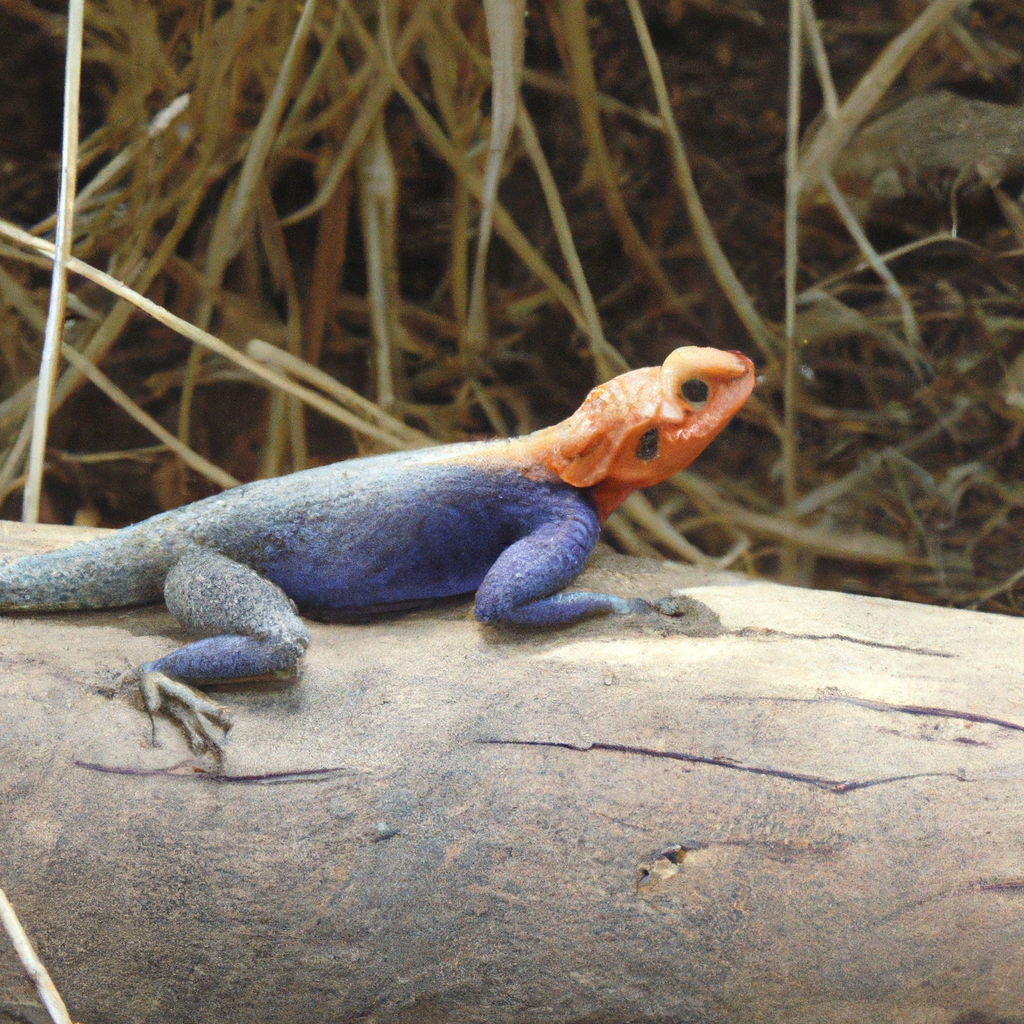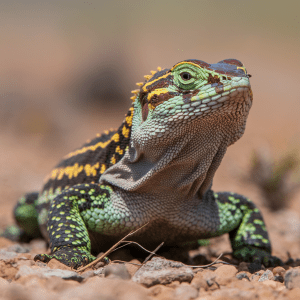Introduction: Lizards in Africa
Lizards in Africa are a fascinating subject of study due to the incredible diversity of species found on the continent. From the iconic Nile monitor lizard to the colorful agama lizards, Africa is home to a wide range of unique reptiles that have adapted to diverse environments. These lizards play crucial roles in the ecosystem, contributing to the balance of various habitats they inhabit.
One of the most intriguing aspects of lizards in Africa is the vast array of adaptations they have developed over time. These adaptations enable them to thrive in different climates, from the arid deserts of the Sahara to the lush rainforests of central Africa. African lizards exhibit a wide range of sizes, colors, and behavioral patterns, making them a captivating subject for researchers and wildlife enthusiasts alike.
The study of African lizards provides valuable insights into evolutionary processes and ecological dynamics. By understanding the characteristics and behaviors of these reptiles, scientists can gain a deeper appreciation of the complex relationships that exist within African ecosystems. Conservation efforts aimed at protecting lizards in Africa are essential to preserving biodiversity and ensuring the long-term survival of these unique creatures.
Overall, lizards in Africa offer a window into the rich tapestry of life on the continent. From their intricate patterns to their remarkable abilities, African lizards continue to inspire awe and wonder among those who study them. By shining a spotlight on these fascinating reptiles, we can better appreciate the beauty and diversity of the natural world in Africa.
Types of Lizards Found in Africa
Africa is home to a wide variety of fascinating lizard species, each with its own unique characteristics and adaptations. From the colorful Agama lizards to the elusive chameleons, the continent boasts a diverse array of reptiles that have adapted to thrive in different environments. Some of the common types of lizards found in Africa include the Nile monitor lizard, the gecko, the plated lizard, and the skink.
The Nile monitor lizard, known for its impressive size and powerful swimming abilities, can be found near water sources across sub-Saharan Africa. Geckos, with their adhesive toe pads and nocturnal habits, are often seen scurrying up walls and ceilings in search of insects to prey on. Plated lizards, characterized by their distinctive overlapping scales, are typically found in rocky areas and savannas. Skinks, with their sleek bodies and small limbs, are well-adapted for burrowing in the ground and are commonly spotted in gardens and grasslands.
Each type of lizard found in Africa has evolved specific traits to help them survive and thrive in their respective habitats. Whether it’s the ability to change color like a chameleon, the agility of a tree-dwelling agama, or the camouflage of a sand-dwelling skink, African lizards display a remarkable range of adaptations that make them both fascinating and essential components of the continent’s ecosystems. Exploring the different types of lizards in Africa provides insight into the rich biodiversity and natural wonders that make this region a hotspot for reptile enthusiasts and wildlife lovers alike.
Characteristics and Features of African Lizards
African lizards exhibit a wide range of fascinating characteristics and features that make them unique within the reptile world. From the vibrant colors of the Agama lizard to the impressive size of the Nile monitor, these creatures showcase remarkable diversity. One notable feature of African lizards is their ability to adapt to various environments, from arid deserts to lush forests. This adaptability is reflected in their physical attributes, such as specialized skin patterns that provide camouflage and protection from predators.
In addition to their physical features, African lizards also possess distinctive behaviors that contribute to their survival in the wild. Some species, like the chameleon, are known for their ability to change color to blend in with their surroundings, while others, such as the gecko, have unique adhesive toe pads that allow them to climb vertical surfaces with ease. These behavioral adaptations not only aid in hunting and foraging but also play a crucial role in avoiding threats and maintaining their territories.
Furthermore, the reproductive behaviors of African lizards vary across species, with some engaging in elaborate courtship displays and others employing different reproductive strategies. Understanding these behaviors is essential for conservation efforts to protect these fascinating creatures and ensure their continued existence in their natural habitats. By delving into the characteristics and features of African lizards, we gain a deeper appreciation for the rich biodiversity of the continent and the importance of preserving these remarkable reptiles for future generations to enjoy.
Habitats of African Lizards
African lizards inhabit a wide range of diverse habitats across the continent. From the arid deserts of the Sahara to the lush rainforests of Central Africa, these reptiles have adapted to thrive in various environments. In the desert regions, species like the spiny-tailed lizard and the monitor lizard have evolved unique characteristics to withstand the extreme heat and scarcity of water. Their ability to burrow into the sand or seek shade in rocky crevices helps them regulate their body temperature and conserve moisture.
In contrast, the rainforests of Africa provide a rich and abundant habitat for lizards such as the colorful agama and chameleon species. These lizards have developed specialized features like vibrant colors and camouflage abilities to blend in with the dense foliage and avoid predators. With ample vegetation and insects for food, rainforest-dwelling lizards have adapted to life in the treetops, using their agility and keen senses to navigate their lush surroundings.
Coastal regions along the shores of Africa also support a variety of lizard species, including the iconic Nile monitor lizard and the flap-necked chameleon. These lizards can be found basking in the sun on rocky cliffs or exploring tidal pools for food. Their proximity to both land and water allows them to feed on a diverse diet and escape danger by quickly retreating to the safety of the water.
Overall, the diverse habitats of Africa offer a rich tapestry for lizards to thrive and showcase their remarkable adaptations to survive in different ecological niches. Understanding the unique environments where African lizards reside is crucial for their conservation and appreciation in the wild.
Behavior Patterns of African Lizards
African lizards exhibit a fascinating array of behavior patterns that have evolved to help them survive in their diverse habitats. The behavior of these reptiles is influenced by factors such as climate, prey availability, and predator interactions. One common behavior seen in African lizards is basking in the sun to regulate their body temperature. Many species are ectothermic, meaning they rely on external sources of heat to maintain their body heat, making sunbathing crucial for their metabolism.
Another interesting behavior of African lizards is their feeding habits. Different species have adapted unique strategies for hunting prey, whether it be insects, small mammals, or other lizards. Some lizards are ambush predators, patiently waiting for their prey to come within striking distance, while others are active hunters that actively pursue their food.
Reproduction is also a key aspect of behavior in African lizards. Mating rituals can vary greatly among species, with some engaging in elaborate courtship displays to attract a mate. Female lizards often exhibit maternal care, protecting their eggs and offspring until they are independent.
Furthermore, communication plays a vital role in the social behavior of African lizards. Many species use visual displays, body language, and vocalizations to establish territories, attract mates, and deter rivals. Understanding these communication signals is essential for the survival and reproductive success of these reptiles.
Overall, the behavior patterns of African lizards showcase the remarkable adaptations and strategies they have developed to thrive in their unique environments. Studying these behaviors provides valuable insights into the ecological roles and evolutionary history of these fascinating reptiles.
Conservation of African Lizards
Conservation of African Lizards is crucial in preserving the rich biodiversity of the continent. Due to various environmental challenges and human activities, many species of lizards in Africa are facing threats to their survival. Conservation efforts play a vital role in protecting these fascinating reptiles and ensuring their habitats remain intact.
One of the key aspects of lizard conservation in Africa is raising awareness about the importance of these creatures in the ecosystem. Lizards play a significant role in maintaining the balance of nature by controlling insect populations and serving as prey for other animals. By highlighting their ecological significance, conservationists aim to promote the conservation of African lizards.
Habitat loss is a major threat to many species of lizards in Africa. Deforestation, urbanization, and agricultural expansion are causing the destruction of natural habitats where these reptiles reside. Conservation initiatives focus on preserving and restoring critical habitats to provide lizards with safe environments to thrive.
Illegal wildlife trade also poses a significant threat to African lizards. Some species are targeted for their skins, used in traditional medicine or captured for the pet trade. Conservation efforts involve implementing laws and regulations to combat illegal trafficking and protect endangered lizard species.
Collaboration between governments, conservation organizations, and local communities is essential for the success of lizard conservation projects in Africa. By working together to address the various threats facing these reptiles, we can ensure a sustainable future for the diverse species of lizards that call Africa home.
Threats to Lizards in Africa
Threats to Lizards in Africa can pose significant challenges to the survival of these fascinating reptiles. One of the primary threats facing African lizards is habitat loss due to human activities such as deforestation, urbanization, and land development. As their natural habitats are destroyed or fragmented, lizards struggle to find suitable areas for shelter, foraging, and breeding, leading to population declines.
Additionally, climate change is a growing concern for lizards in Africa. Rising temperatures, unpredictable weather patterns, and habitat alterations can directly impact the survival and reproduction of these cold-blooded creatures. Changes in temperature can disrupt their breeding cycles, affect food availability, and alter their ability to regulate body temperature, ultimately threatening their long-term survival.
Another significant threat to African lizards is the illegal wildlife trade. Lizards are often captured and trafficked for the exotic pet trade or traditional medicine, putting additional pressure on already vulnerable populations. The illegal collection and trade of lizards not only deplete wild populations but also disrupt ecosystems and biodiversity.
Furthermore, pollution, pesticides, and invasive species also pose threats to African lizards. Pollution from agricultural runoff, industrial activities, and littering can contaminate their habitats and food sources, leading to health issues and population declines. Invasive species, introduced by human activities, can outcompete native lizards for resources or prey on them, further impacting their survival.
To address these threats and ensure the conservation of African lizards, efforts such as habitat protection, anti-poaching measures, sustainable land management practices, and public awareness campaigns are crucial. By understanding and mitigating these threats, we can help protect the rich diversity of lizards that call Africa home.
Best Places to Spot Lizards in Africa
When it comes to spotting lizards in Africa, there are several prime locations that offer incredible opportunities for observation and appreciation of these fascinating reptiles. From the deserts of the Sahara to the lush rainforests of Central Africa, the continent boasts a diverse range of habitats that are home to numerous species of lizards.
One of the best places to see lizards in Africa is the Namib Desert in Namibia. Here, you can find the web-footed gecko and shovel-snouted lizard, adapted to the harsh desert conditions. Moving to the savannas of East Africa, you may encounter the colorful agama lizards basking in the sun or darting across the grasslands.
For those interested in more tropical species, the rainforests of Madagascar are a hotspot for unique lizards such as chameleons and leaf-tailed geckos, known for their incredible camouflage abilities. Additionally, the coastal regions of South Africa offer a chance to see monitor lizards, including the impressive Nile monitor, which can grow up to 2 meters in length.
Whether you are a wildlife enthusiast, a nature photographer, or simply a curious traveler, exploring the diverse landscapes of Africa provides a rewarding experience for observing lizards in their natural habitats. Remember to respect the environment and wildlife while on your lizard-spotting adventures, and take the time to appreciate the beauty and complexity of these remarkable creatures that call Africa home.
Fun Facts about African Lizards
Africa is home to a fascinating array of lizard species, each with its own unique characteristics and behaviors. From the colorful Agama lizards to the stealthy geckos, these reptiles exhibit a remarkable diversity in their physical appearances and habits. One interesting fact about African lizards is their ability to adapt to various environments, ranging from deserts to rainforests. Some species, like the chameleons, are known for their remarkable camouflage abilities, blending seamlessly into their surroundings to avoid predators or ambush prey.
Another intriguing aspect of African lizards is their diverse range of feeding habits. While some species are insectivores, feeding primarily on insects and small invertebrates, others are herbivores or omnivores, consuming a varied diet of plants, fruits, and even other lizards. This adaptability in diet allows African lizards to thrive in different ecosystems and play essential roles in the local food chains.
Moreover, African lizards display fascinating mating rituals and social behaviors. Some species engage in elaborate courtship displays to attract mates, while others establish hierarchical structures within their groups. Understanding these behaviors provides valuable insights into the complex social dynamics of these reptiles and their role in maintaining ecosystem balance.
As we delve deeper into the world of African lizards, we uncover a wealth of captivating information that highlights the beauty and importance of these creatures in their natural habitats. By appreciating the diversity and significance of African lizards, we can gain a deeper understanding of the intricate web of life that sustains the continent’s rich biodiversity.
Conclusion: Appreciating the Diversity of Lizards in Africa
Africa is home to a remarkable array of lizard species, each contributing to the rich biodiversity of the continent. From the vibrant colors of the Agama lizards to the camouflaged patterns of geckos, African lizards display a fascinating range of physical characteristics. These reptiles have adapted to various habitats across Africa, thriving in deserts, savannas, forests, and even urban areas.
One of the most intriguing aspects of African lizards is their diverse behavior patterns. Some species are known for their impressive displays during mating rituals, while others exhibit unique hunting techniques. Observing these behaviors in the wild can offer valuable insights into the natural world and the interconnectedness of ecosystems.
Conservation efforts play a crucial role in protecting the diverse populations of lizards in Africa. Habitat loss, climate change, and human activities pose significant threats to these reptiles, making conservation initiatives essential for their survival. By raising awareness about the importance of preserving lizard habitats, researchers and conservationists aim to safeguard these species for future generations.
For wildlife enthusiasts and nature lovers, Africa offers a wealth of opportunities to observe lizards in their natural environments. National parks, nature reserves, and wildlife sanctuaries provide ideal settings for spotting various lizard species and learning more about their behaviors and habitats.
In conclusion, appreciating the diversity of lizards in Africa allows us to gain a deeper understanding of the intricate ecosystems that support these fascinating reptiles. By celebrating the unique characteristics and behaviors of African lizards, we can contribute to their conservation and ensure that these remarkable creatures continue to thrive in their natural habitats.




